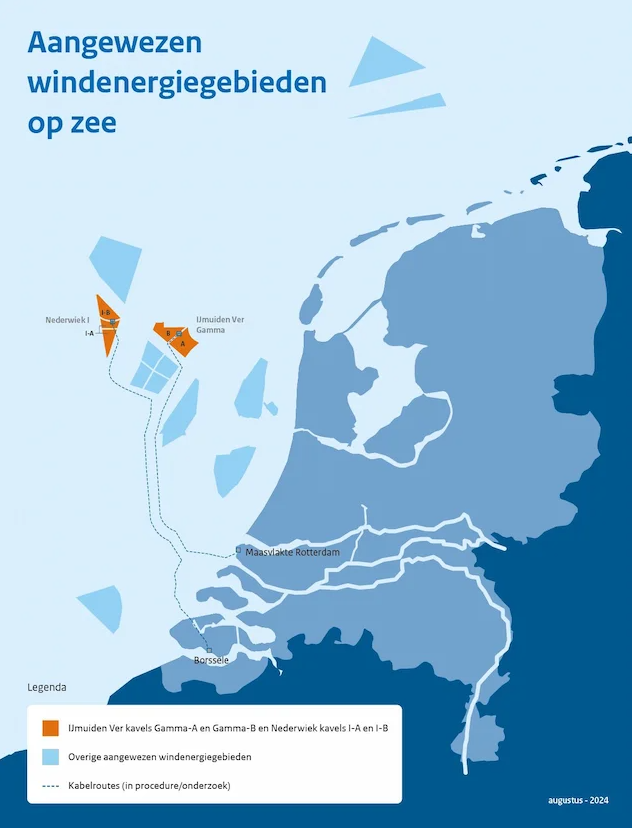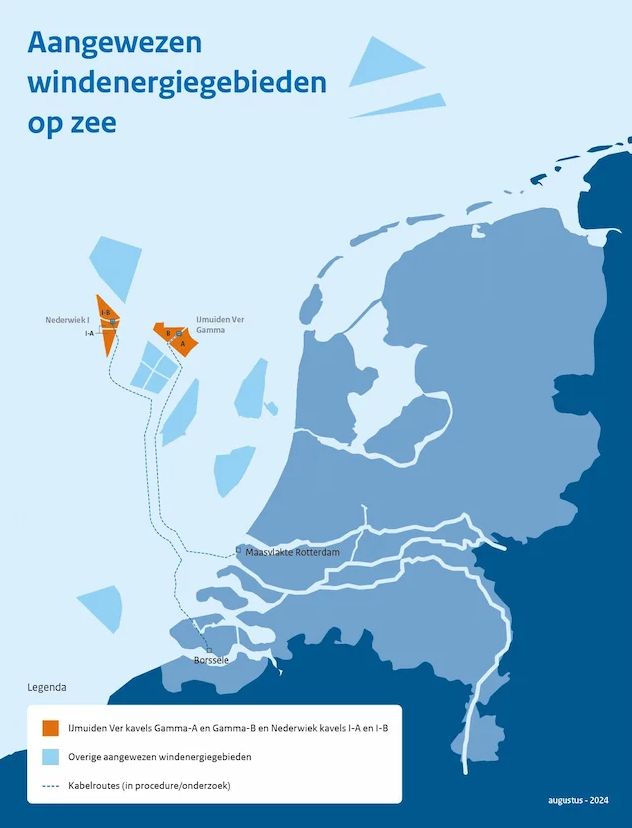The Dutch Ministry of Climate Policy and Green Growth has decided to split the sites for the IJmuiden Ver Gamma and Nederwiek I wind farms into four smaller 1 GW sites to reduce financial risks for offshore wind farm developers, according to the Netherlands Enterprise Agency (RVO).
The Dutch Government will divide the 2 GW IJmuiden Ver Gamma into two sections: IJmuiden Ver Gamma-A on the eastern side and IJmuiden Ver Gamma-B on the western side. Similarly, the 2 GW Nederwiek I will be split into Nederwiek IA in the south and Nederwiek IB in the north.
Each site can support an offshore wind farm with a 1 GW capacity.

The IJmuiden Ver Wind Farm Zone contains three 2 GW sites: Alpha, Beta, and Gamma. The total area of the four lots is approximately 650 square kilometers.
Site Gamma-A is around 53 kilometers from the west coast of the Netherlands, while site Gamma-B is about 61 kilometers from the coast.
The Nederwiek Wind Farm Zone is one of the three new offshore wind areas the Dutch Government designated in 2022.
Sites IA and IB start approximately 95 kilometers from the west coast of the Netherlands, and the total surface area of the zone is around 600 square kilometers.
In the last permit round for 2 GW offshore wind projects, RVO received several bids from developers, although the number was lower than anticipated.
Market conditions, including increased costs and uncertain revenues, influenced the decision, according to the press release.
To make investments more manageable and reduce financial risks for developers, the Ministry of Climate Policy and Green Growth is splitting the 2 GW areas into smaller 1 GW sites, said RVO.
The permit application window for these plots is expected to open and close by the end of the third quarter of 2025. RVO plans to announce the details in the fourth quarter of 2024.
Original Story at www.offshorewind.biz
